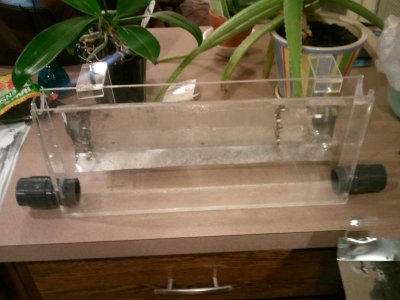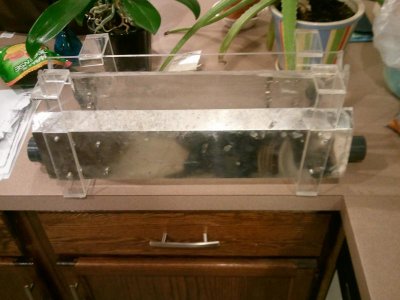Floyd R Turbo
Either busy or sleeping
So you use the gravel to keep the Alkalinity up instead of dosing?
I'm still not quite following one part of the design. If you have the intake chamber (1st) receiving free-flow, then that chambers is pumped out to the ATS screen, you're going to have difficulty balancing that level. It will either get sucked dry or will overflow into #2. It's next to impossible to balance a pump output to exactly the water input. So I would be interested to hear what you plan to do to solve that problem
Also, in the situation you describe where the ATS pump fails, and water then continues to run across it when #1 fills up and spills over, I don't understand that. Is this a single-sided screen, so the ATS lights are only on one side? It would have to be, otherwise you're essentially putting a light fixture in an enclosed box surrounded by water on all sides, which is inherently dangerous.
Also you mention several times "as you have shown" - what are you referring to here?
Still trying to wrap my head around this design. I need pictures!
I'm still not quite following one part of the design. If you have the intake chamber (1st) receiving free-flow, then that chambers is pumped out to the ATS screen, you're going to have difficulty balancing that level. It will either get sucked dry or will overflow into #2. It's next to impossible to balance a pump output to exactly the water input. So I would be interested to hear what you plan to do to solve that problem
Also, in the situation you describe where the ATS pump fails, and water then continues to run across it when #1 fills up and spills over, I don't understand that. Is this a single-sided screen, so the ATS lights are only on one side? It would have to be, otherwise you're essentially putting a light fixture in an enclosed box surrounded by water on all sides, which is inherently dangerous.
Also you mention several times "as you have shown" - what are you referring to here?
Still trying to wrap my head around this design. I need pictures!


